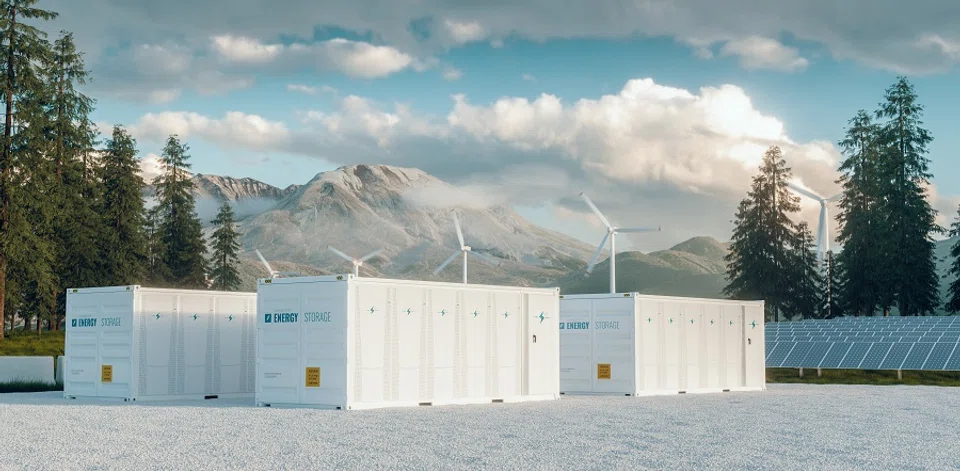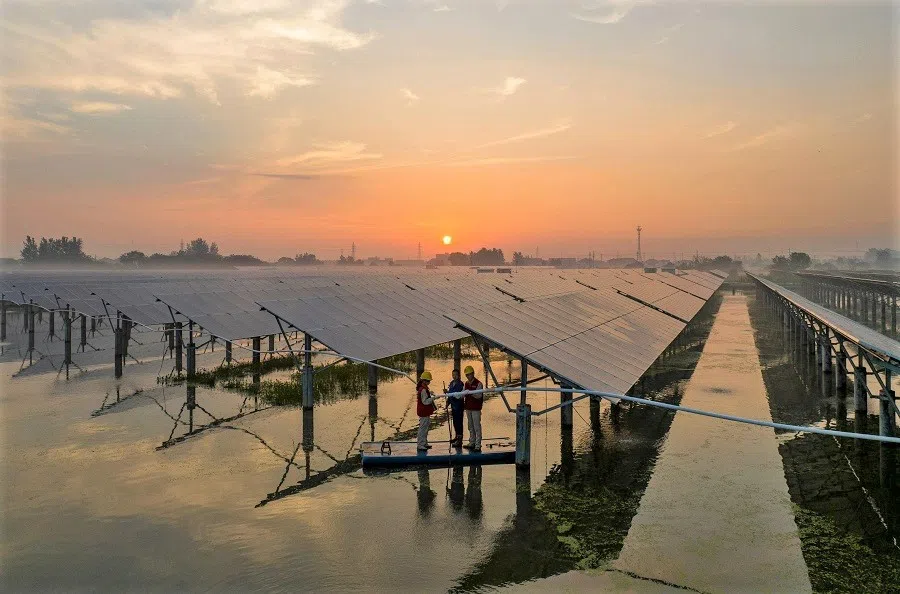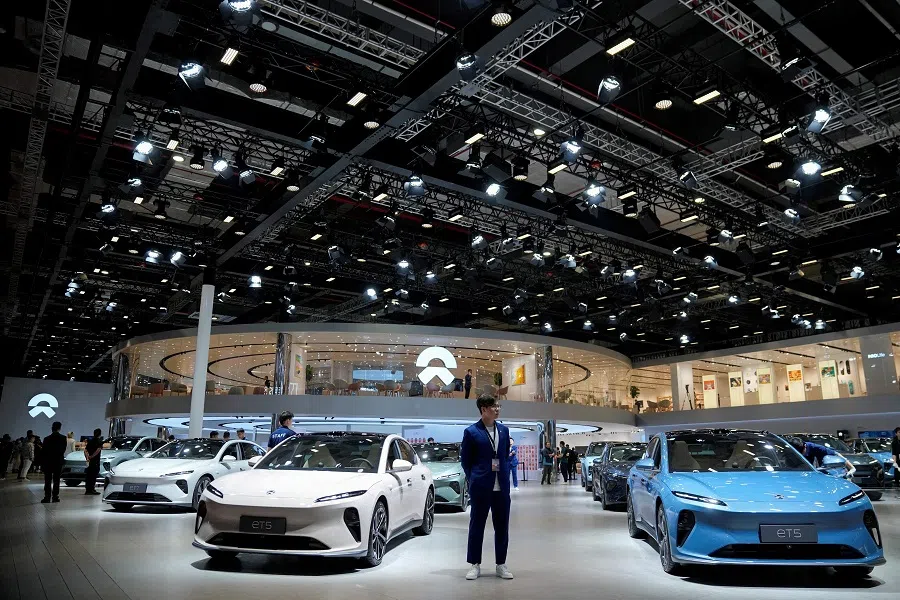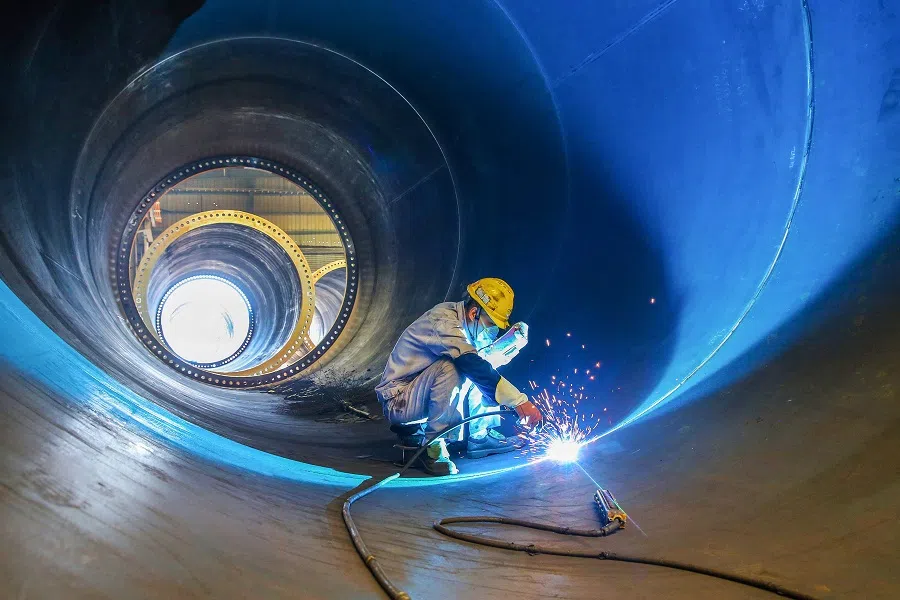Five factors powering China's energy storage boom
China's energy storage sector is experiencing rapid growth due to an accelerated uptake of renewables in the country's energy mix and other factors. But the booming industry also faces some serious challenges. Here are five things to know about China's energy storage industry.

(By Caixin journalists Lu Yutong and Mo Yelin)
China's energy storage sector is growing rapidly, with planned capacity based on newly published tenders of projects topping 19 gigawatts (GW) for the first five months of this year, up 93.5% from the same period last year, according to a report released late last month by Haitong Securities Co. Ltd.
By 2027, China is expected to have a total new energy storage capacity of 97 GW, with a compound annual growth rate of 49.3% from 2023 to 2027, the report said, citing data from industry group the China Energy Storage Alliance (CNESA). New energy storage systems in China are largely based on lithium-ion battery technology.
A series of factors can explain the booming industry. This includes an accelerated uptake of renewables in the country's energy mix, leading to more demand for storage to ensure a stable power supply. Falling lithium prices also reduced costs for installations of such new energy storage systems.
But the industry also faces some serious challenges including the lack of a mature business model that can generate long-term returns for most developers and builders. Industry experts said Beijing should implement more pro-market reforms and further liberalise the electricity market to promote the industry's development.

Here are five things to know about China's energy storage industry.
But the increasing adoption of renewables in the total power mix poses the problem of potential gaps in supply given their variable and intermittent nature. A solution to the issue is through the deployment of such energy storage systems...
How is China's green energy push accelerating the development of the sector?
China has actively pushed for the development of renewables as it races to meet President Xi Jinping's pledges to achieve peak carbon dioxide emissions by 2030 and carbon neutrality by 2060. The country expects to see 52% of electricity generation from non-fossil fuel sources this year, the first time the clean energy proportion has exceeded 50%, according to the National Energy Administration (NEA) in an April report. That proportion is targeted to be at 80% by 2060.
But the increasing adoption of renewables in the total power mix poses the problem of potential gaps in supply given their variable and intermittent nature. A solution to the issue is through the deployment of such energy storage systems, which can be linked up to the grid to soak up excess supply and zero in on areas where demand is highest.
How are fluctuating lithium prices driving this boom?
The price of lithium carbonate is a major determinant in the cost of producing lithium-ion battery cells, a major component for most of the country's battery-powered energy storage systems. Other types include pumped hydro storage.

Although the price of the metal has started to recover after falling to a more than one-year record low at the end of April, the 303,500 RMB (US$42,499) per ton price on 14 July still represented a more than 45% drop from its peak in November, according to data from financial data provider Wind. That led to lower average price per cell used in energy storage systems, which stood at 0.65 RMB per watt-hour in May, down 12.6% from the level a month earlier, according to a June report from industry research firm TrendForce Corp.
Overall, the costs of building an energy storage system have edged lower with the average bidding price for a project at 1.082 RMB per watt-hour in June, down 25% from the level in January, according to CNESA. The decline was partly the result of a price war stirred up by battery-makers, which had rushed into the energy storage sector as they sought to diversify their business amid the slowing growth of the electric vehicle market.
The participation of power generation firms into the industry is largely a result of mandatory government policy, which generally requires renewable power plant projects in China to allocate a certain proportion of its resources to build energy storage facilities.
Who are the major investors behind energy storage projects in China?
Most of the energy storage projects in China are undertaken by companies with strong links to the state, including power generation firms and grid network companies, one senior executive at a foreign oil and gas company told Caixin.
The participation of power generation firms into the industry is largely a result of mandatory government policy, which generally requires renewable power plant projects in China to allocate a certain proportion of its resources to build energy storage facilities. The policy to ramp up expanding energy storage aims to reduce imbalances between energy production and demand while alleviating pressure on the grid during peak times.

For grid companies, investing in energy storage systems has been instrumental for avoiding overinvestment in building grid infrastructure while regulating energy distribution. But government policy is also crucial in deciding the level of investment. Energy storage investment by grid firms experienced a setback after the National Development and Reform Commission (NDRC) and the NEA in May 2019 mandated that grid firms could no longer include storage infrastructure costs into power transmission and distribution prices. Things changed in July 2021, when the two government agencies said it was exploring new measures that could potentially help grid firms ease the facility costs, and investments started to flow back in.
What are some of the challenges facing builders?
Some power generation firms said the government's mandate of pairing renewable projects with energy storage facilities drives up costs including land acquisition and building out the facilities themselves, which ultimately lowers the projects' returns.
Still, the government's boost doesn't necessarily guarantee big profits across the board... as electricity prices, power system structures, government subsidy policies and grid dispatch frequencies vary across different regions.
For an energy storage facility to have a 10% installed capacity of a renewable project and a storage duration of two hours, the overall internal rate of return for that project will be decreased by 1 percentage point, according to a person at a major state-owned utility. If the facility is required to have a 15% installed capacity of the renewable project and a four-hour storage duration, that return rate would be further decreased by about 3 percentage points, according to his calculations.
How is the government addressing these issues?
Last June, the NDRC and the NEA jointly released a document that would allow qualified energy storage projects to become independent service providers. They can offer energy and ancillary services and rent out storage capacity to utility companies.
Still, the government's boost doesn't necessarily guarantee big profits across the board, one energy storage analyst told Caixin, as electricity prices, power system structures, government subsidy policies and grid dispatch frequencies vary across different regions.
Fan Ruohong also contributed reporting.
This article was first published by Caixin Global as "Five Things Powering China's Energy Storage Boom". Caixin Global is one of the most respected sources for macroeconomic, financial and business news and information about China.

![[Big read] Paying for pleasure: Chinese women indulge in handsome male hosts](https://cassette.sphdigital.com.sg/image/thinkchina/c2cf352c4d2ed7e9531e3525a2bd965a52dc4e85ccc026bc16515baab02389ab)

![[Big read] How UOB’s Wee Ee Cheong masters the long game](https://cassette.sphdigital.com.sg/image/thinkchina/1da0b19a41e4358790304b9f3e83f9596de84096a490ca05b36f58134ae9e8f1)

